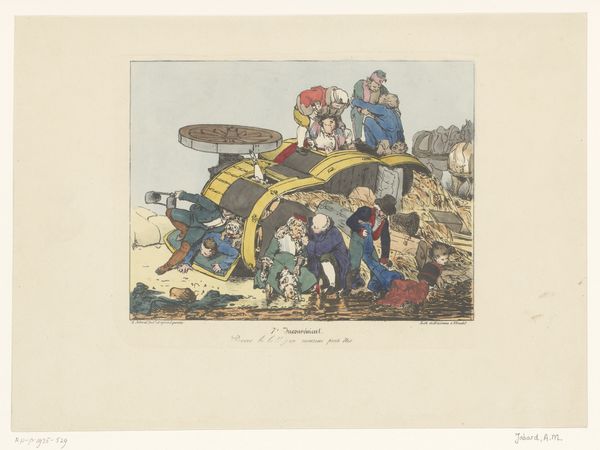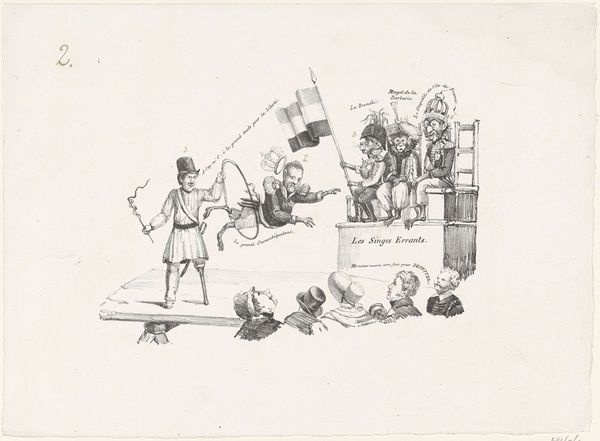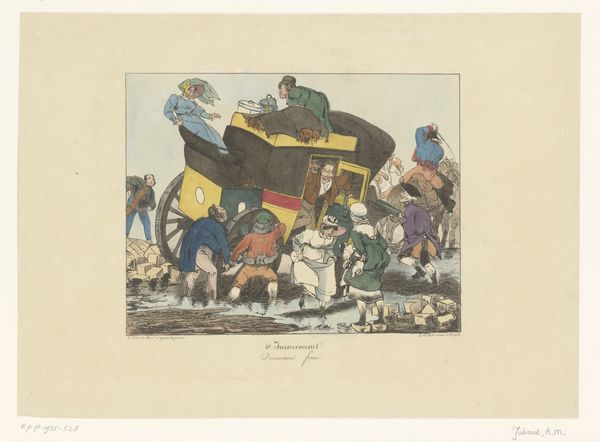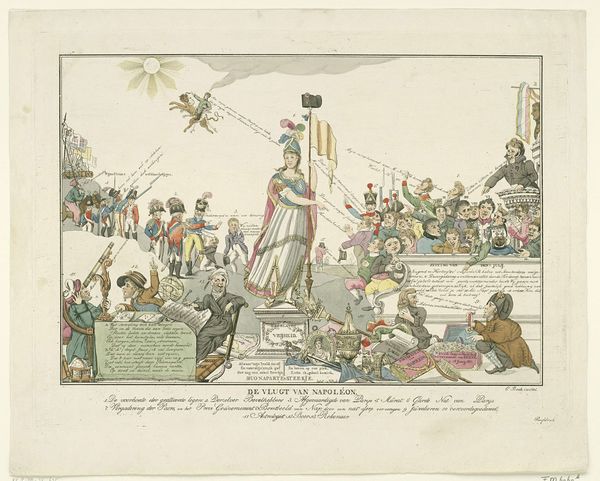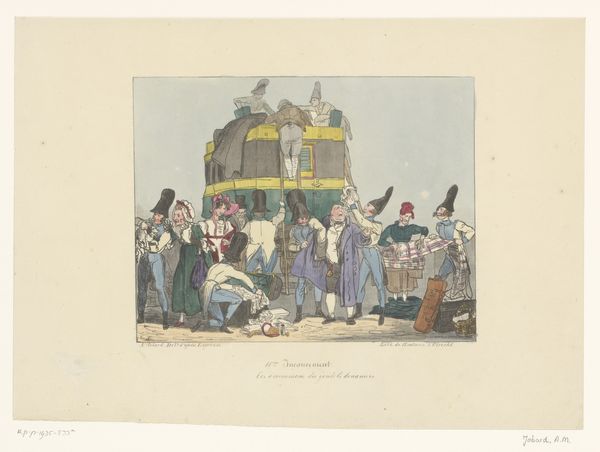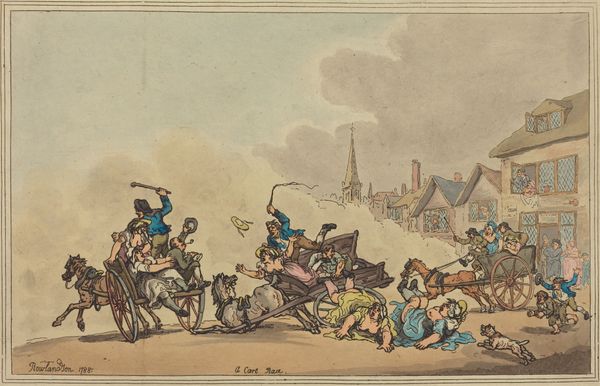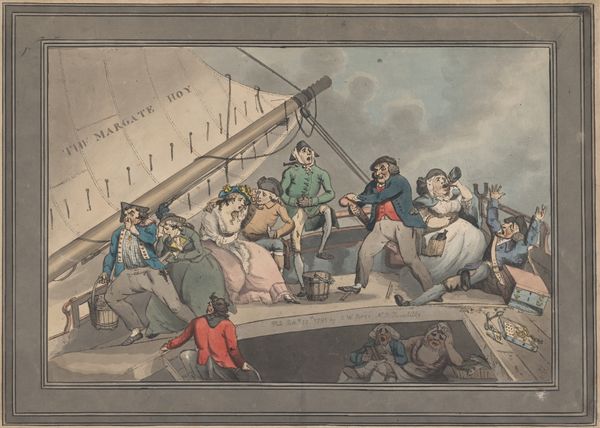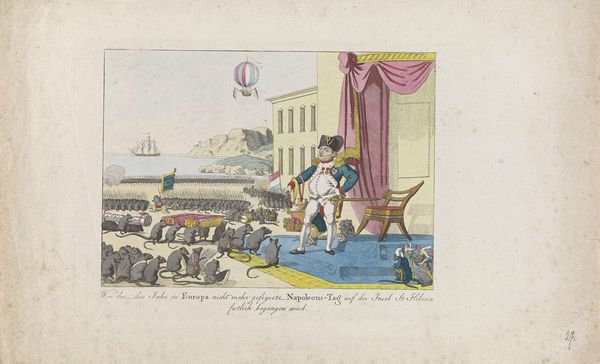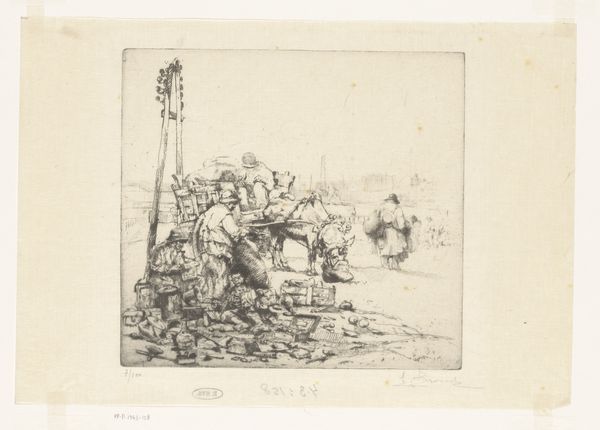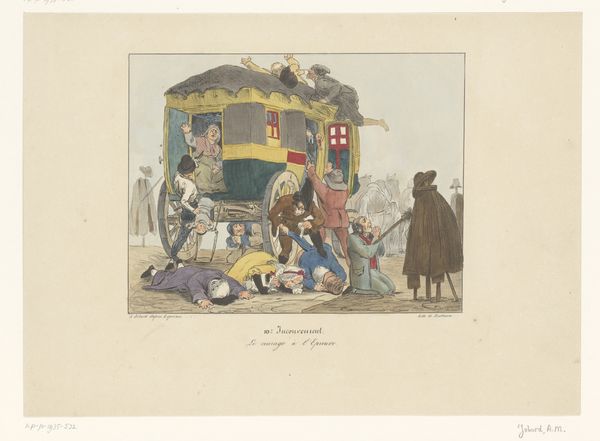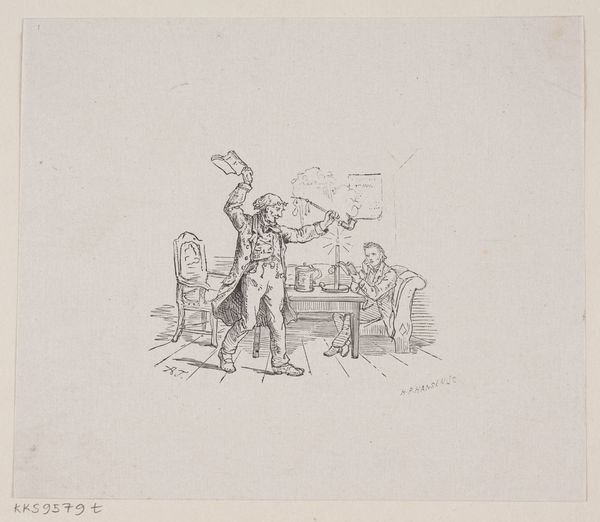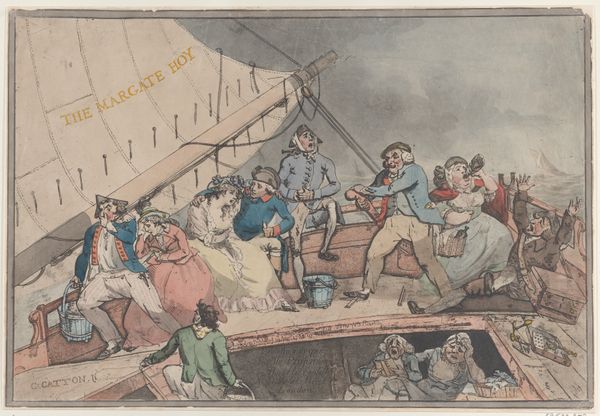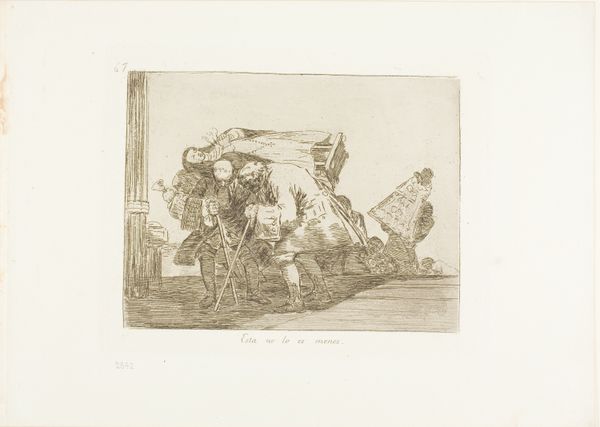
print, watercolor
#
portrait
#
narrative-art
# print
#
caricature
#
figuration
#
watercolor
#
romanticism
#
watercolour illustration
#
genre-painting
#
history-painting
#
watercolor
Dimensions: height 297 mm, width 374 mm
Copyright: Rijks Museum: Open Domain
This hand-colored etching, titled *Willem I gooit de jezuïten uit het land*, was made in 1829 by an anonymous artist. The printmaking process used to create this image is interesting in itself. The artist would have first etched the design into a metal plate, likely copper, using acid to bite the lines. Then, ink would be applied to the plate and wiped away, leaving ink only in the etched lines. Finally, the plate would be pressed onto paper, transferring the image. The final touch was the addition of color by hand. We can really consider how the artist's technical skill influences the final product. The sharp lines create a crisp, detailed image, while the hand-coloring adds vibrancy and personality. The very process of etching – a labor-intensive, reproducible medium – speaks to the widespread social and political discontent in the Netherlands at the time. By focusing on the materials, making, and context of this etching, we can gain a deeper understanding of its meaning and significance.
Comments
No comments
Be the first to comment and join the conversation on the ultimate creative platform.

